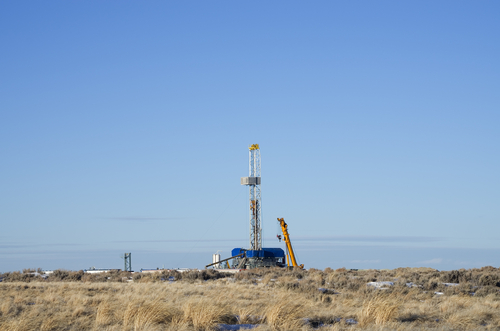
Let’s begin with a short quiz.
What two things do the following nine states have in common: Colorado, Pennsylvania, Arkansas, Ohio, Louisiana, Texas, Montana, Oklahoma and North Dakota?
No, they are not all swing states in the coming election. Most aren’t, in fact.
The two things they have in common are that 1) all of them have unemployment rates that are below the national average (8.2 percent in June and May), and 2) all of them are experiencing shale gas and oil booms that have been made possible by horizontal drilling and fracking.
In North Dakota, the state with the lowest unemployment rate in the country (3 percent), the job market has become so hot in the state’s oil patch that local McDonald’s restaurants are offering signing bonuses to attract help. In Colorado, where unemployment is just below the national average (8.1 percent), the pace is less torrid, but is about to heat up. Last month, Noble Energy, which has leased 880,000 acres in the Denver-Julesburg Basin, revealed that in the years 2012-2016 it planned to invest $8 billion in its Colorado acreage.
Anadarko Petroleum, which has 350,000 acres in the Wattenberg Field, is investing $1 billion a year in leases.
I can’t think of companies in any other industry that are contemplating investments of that magnitude in Colorado. And Noble and Anadarko are just two of a dozen or more oil and gas companies that are operating in Colorado. The industry could easily be spending $3 billion to $5 billion a year in Colorado over the next few years.
It may drive the peace and justice/ occupy Wall Street crowd wild to hear it, but oil and natural gas are looking a lot like Colorado’s ticket out of the recession. And it’s all due to fracking.
But what of the environment? The environmental objections to fracking have for the most part been debunked as fast as they have been raised. The biggest one, that fracking poses a threat to groundwater, was based on a handful of examples (out of half a million wells fracked over 50 years) that failed to stand up to scrutiny. In the most serious case, in Pennsylvania, water wells were found to have been contaminated due to improperly installed casing in a nearby gas well, not because of fracking.
A second objection — specific to Colorado — is that fracking uses too much water to be done in a semi-arid state like ours. Hogwash. Currently fracking in Colorado uses some 33,000 acre feet of water a year, less than 1 percent of the state’s water resources. What’s more, drillers are increasingly reclaiming and recycling the water they use.
Water is not life’s only necessity. A typical Colorado household uses 90,000 cubic feet of gas a year, and there are a couple million of them. Thirty-three thousand acre-feet of water is a small price to pay for a stable, cheap supply of gas.
However, one environmental impact of the fracking-enabled oil is beneficial and trumps all the complaints — the swift displacement of coal by natural gas as the largest source of U.S. electric power.
According to the U.S. Energy Information Administration, in April electric power generated by natural gas-fired power plants nearly equaled the amount created by coal-fired plants.
This has never happened. Coal and natural gas each accounted for 32 percent of the country’s electricity during in April; 96 million megawatt hours of electricity was generated with coal, 95.9 million megawatt hours with natural gas. The natural gas plants produced only half as much CO2 as the coal-powered plants.
As recently as five years ago, America got more than 50 percent of its electricity from coal. Thanks to a deluge of cheap natural gas produced by fracking, coal’s share of electricity production has plunged. If the drop holds, utility coal use could be down by as much as 400 million tons annually. Replacing that amount of coal with natural gas reduces U.S. CO2 output by about 550 million tons.
In other words, fracking is responsible for a larger reduction in U.S. CO2 output than all the renewable energy sources combined.
I suspect the real objection to fracking is that it has led to a phoenix-like resurrection of the domestic oil and gas industry, which enrages the Left.
But that doesn’t change the fact that the domestic oil and gas industry is leading the recovery, and producing a major near-term reduction in CO2 emissions — and assorted other pollutants from coal, including sulfur dioxide, nitrogen oxides, mercury and uranium.
Maybe it’s time for greens, progressives, and Democrats to end their pathological vendetta against the oil and gas industry, and show a decent respect for its accomplishments.
Respond: letters@boulderweekly.
This opinion column does not necessarily reflect the views of Boulder Weekly.














